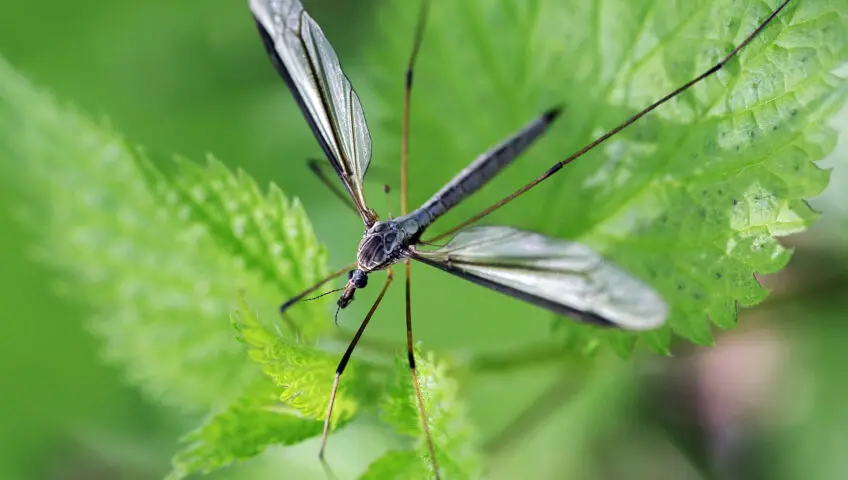We see them quite often this time of year. They flutter around our yards and sometimes get into our homes.
Unfortunately for them, they resemble jumbo mosquitoes. But resist the urge to swat crane flies. They’re mostly beneficial.
The crane fly is a fascinating insect with a unique lifecycle. Despite their size and appearance, crane flies are harmless to humans and animals. They have delicate bodies and long, slender legs, resembling miniature helicopters when in flight.
These insects are common in Florida, often found in damp areas such as marshes, wetlands and near bodies of water. Crane flies undergo a complete metamorphosis, starting as eggs laid in moist soil or vegetation. The larvae, commonly known as leatherjackets, feed on decaying organic matter and plant roots (arguably, the crane fly’s one downside).
Although their larvae can cause damage to lawns and crops, adult crane flies feed primarily on nectar. They do not prey on mosquitoes, despite their popular “skeeter eaters” moniker.
These insects have a short lifespan, often living only a few days as adults. Interestingly, crane flies are essential pollinators, contributing to the ecosystem’s biodiversity. Despite their abundance, they remain a source of curiosity and wonder, especially due to their seemingly clumsy flight patterns.
That means you can scratch the crane fly off your list of insects that call for eradication. If you do find real pests in your home and yard, though, call Brevard’s premier pest control and lawn maintenance company. Contact Slug-A-Bug at (321) 259-7844 for a free, no-obligation assessment.
